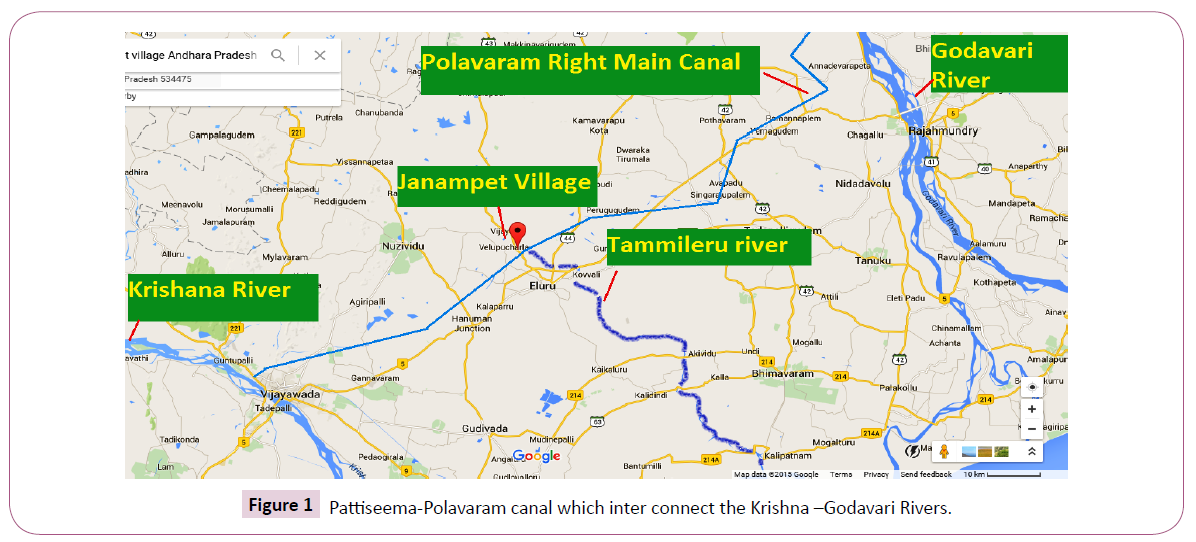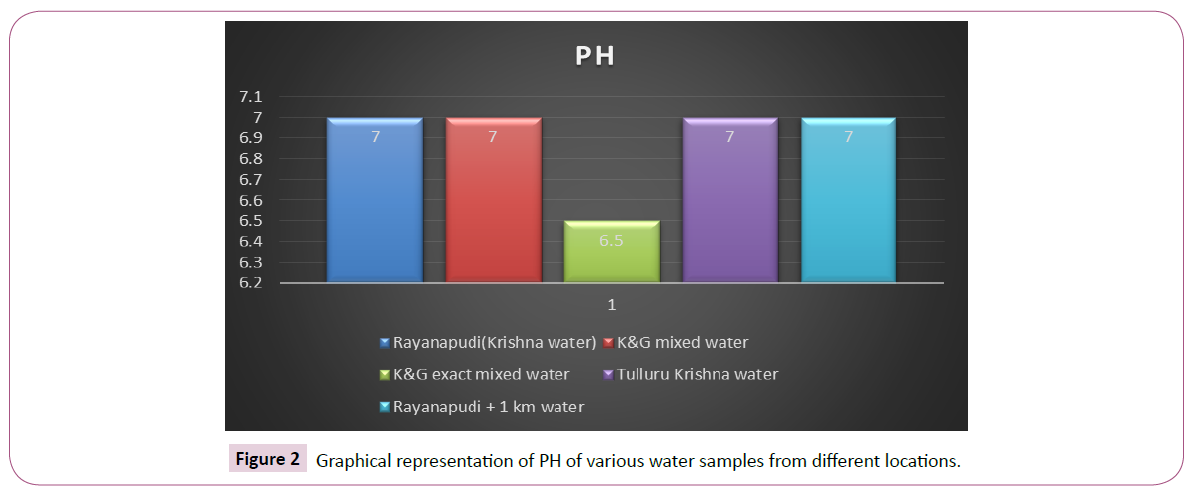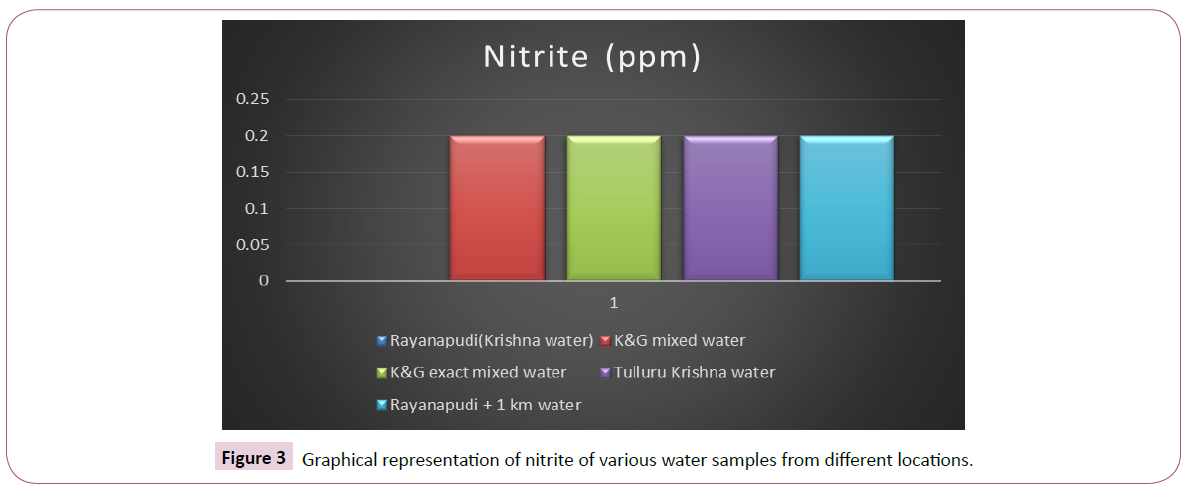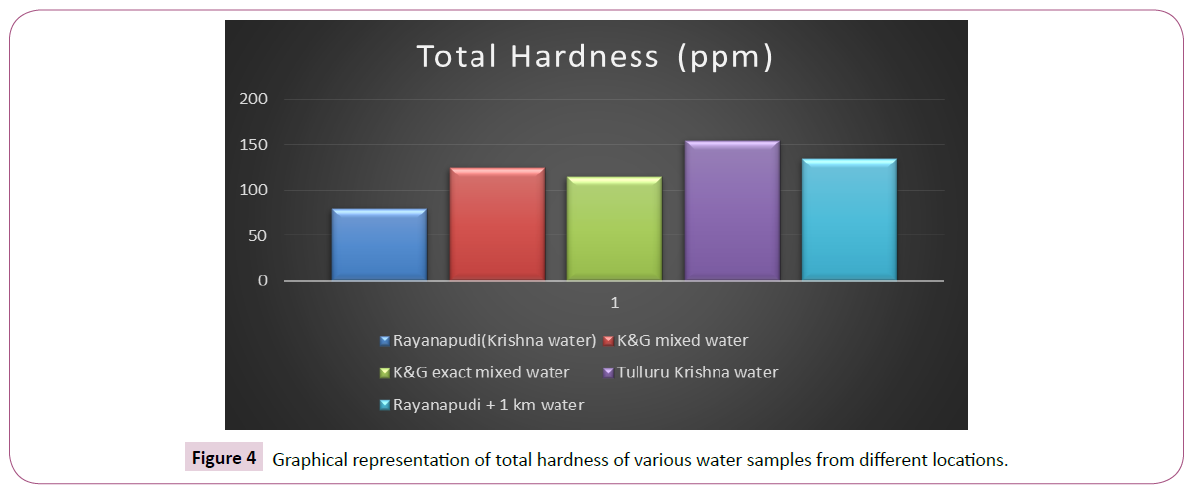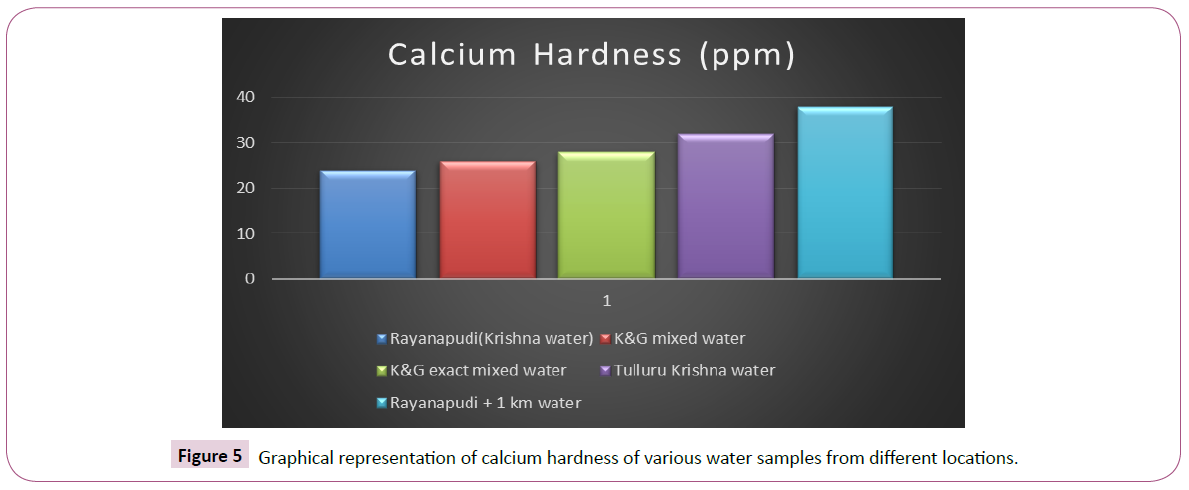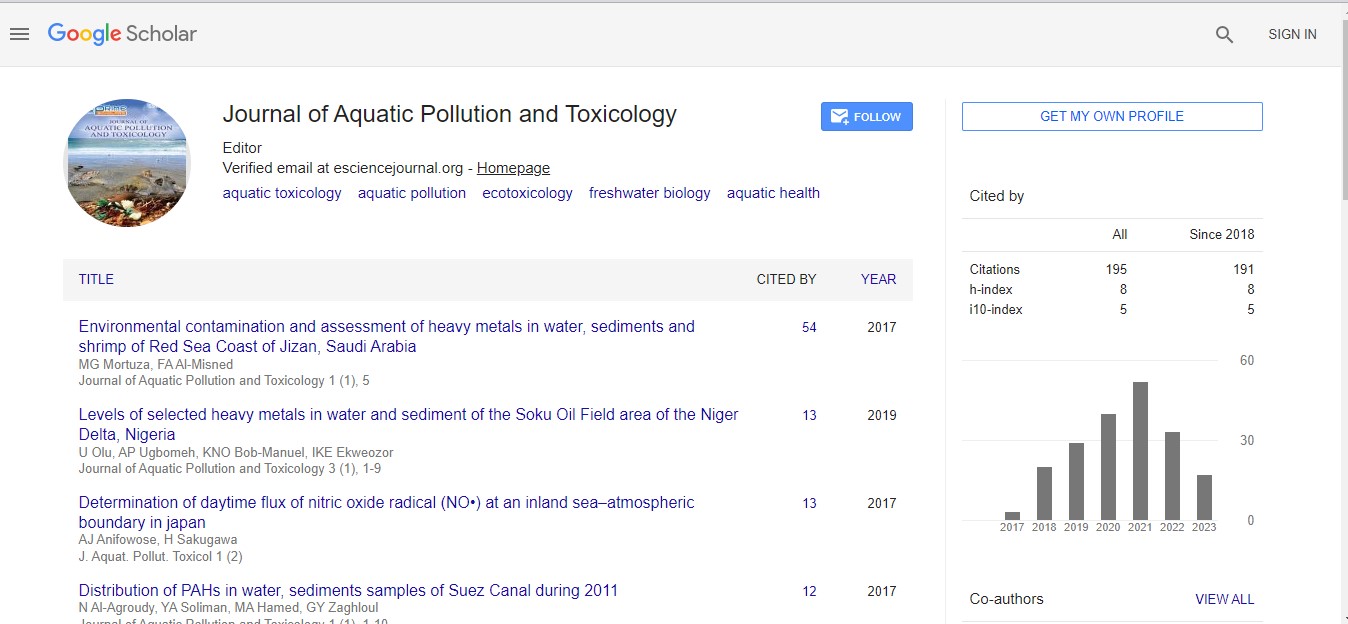Ravi Babu Birudu1, Israel Cherukuri2, Satyavathi Chinthada3 and Ponnekanti Joseph Ratnakar2*
1Department of Zoology & Aquaculture, Acharya Nagarjuna University, Guntur, A.P. India
2Department of Geology, Acharya Nagarjuna University, Guntur, A.P. India
3Department of Zoology, Bharathiar University, Tamilnadu, India
- *Corresponding Author:
- Ponnekanti Joseph Ratnakar
Department of Geology
Acharya Nagarjuna University
Guntur, A.P. India
Tel: 9935827738
E-mail: jrponnekanti@gmail.com
Received Date: May 10, 2021; Accepted Date: August 20, 2021; Published Date: September 02, 2021
Citation: Birudu RB, Cherukuri I, Chinthada S, Ratnakar PJ (2021) Water Quality Changes in Krishna River after Interlinking With Godavari River. J Aquat Pollut Toxicol. Vol.5 No.5:21.
Keywords
Alkalinity; Interlinking; Krishna river; Godavari river; Polavaram canal
Introduction
The linking of the Godavari and Krishna Rivers is part of the Indian Government’s National River Inter-linking Project under which thirty rivers will be connected throughout the country. The river linking proposal has claimed various benefits including to increase irrigation fields, drought mitigation, flood control, domestic and industrial water supply, navigational facilities, fisheries, salinity control, pollution control, recreation facilities, and socio-economical development [1]. Un-utilized water from the Godavari River could be diverted to the paddy growing region of Rayalaseema, which often suffers from insufficient water. In order to link the two rivers a 174km-long canal, known as the Polavaram Right Canal, was constructed and supplied with pumps that will remove excess water from the Godavari River and send it to the Krishna River. Paddy farmers in the Krishna Delta are the main beneficiary of the linking of the two rivers. Diverted water will also provide Amaravati, the planned state capital, with drinking water. The project is seen as a means to ensure the future water and food security of Andhra Pradesh.
In general the River Krishna water is low turbid than the River Godavari water. To study the various physio- chemical parameters of water from the Krishna River and mixed water of Krishna and Godavari, the water samples were collected and analyzed. Physicochemical characteristics of various rivers have been studied by many authors and measured the physico chemical parameters and assessed the water quality status to the rivers [2,5].
There are mainly two irrigation water sources such as canal water and tubewell water. Undesirable substances in water may deteriorate soil fertility and crop growth and crop yield. These substances have come from natural or manmade (domestic and industrial effluents) sources. Nutrients, suspended solids, organic materials, heavy metals, pesticides and industrial chemicals are the possible contamination in water. Anthropogenic activities within river basins, erosion and atmospheric depositions were also the main negative impacts on the water quality of most the reservoirs [6]. The density of water depends on total dissolved solids, whose increased concentrations can be harmful through interrupting the flow of water into and out of an organism's cells, to a decrease in photosynthesis, combine with toxic compounds and heavy metals, and lead to an increase in water temperature. Among the dissolved solids in water, carbonate, bicarbonate, sulfate, nitrate, calcium and magnesium are important. Extremely low total dissolved solids level can cause the water tasteless and un-acceptable [7]. There are many factors which determine water quality. Among the most important are alkalinity and pH. Water with high alkalinity can adversely affect the pH of the growing medium, interfering with nutrient uptake and causing nutrient deficiencies which compromise plant health. Alkalinity and pH are two important factors in determining the suitability of water for irrigating plants.
The calcium and magnesium in water resulted from the decomposition and dissolution of various calcium and magnesium mineral sources. In living organisms calcium is an essential element, basically in cell physiology and mineralization of bones and shells. Hardness of water is due to presence of calcium and magnesium carbonates. The concentration of carbonates in natural waters is a function of dissolved carbon dioxide, temperature, pH, cations and other dissolved salts. In water carbonates and bicarbonates concentrations should be under limits, increased levels may be harmful for humans, animals and plants. The measure of ammonium and nitrate is considered as an indication of possible contamination of the water source and design fertility programme. Water quality should be tested to ensure it is acceptable for irrigation, aquaculture operations and drinking purpose etc. Present study mainly focused to determine and compare changes in some chemical parameters of water from three different locations of the River Krishna, exact location of interlinking of Krishna-Godavari Rivers and mixed area of Krishna and Godavari is shown in Figure 1.
Figure 1: Pattiseema-Polavaram canal which inter connect the Krishna –Godavari Rivers.
Materials and Methods
For quantitative analysis of Krishna River water five samples were collected from about 15 -25 Km stretch in between Rayapudi and Ferri (Ibrahimpatnam). The water has been collected from epilimnion during day time. Sample method is same as suggested in APHA, methods for collection and analysis of water samples. Sampling is done at each station in polythene bottles of two-liter capacity. Sampling has been done in the month of May 2019. The analysis is carried out for determination of chemical properties of five different area water samples such as: pH, total hardness, permanent hardness, alkalinity, sulphate content, ammonia, nitrate and nitrite of these samples were determined by using standard procedure [8-14].
The samples were analyzed for pH, Total Alkalinity, Dissolved Oxygen, Total Hardness Ammonia, Nitrate and Nitrite by following the standard methods [15]. pH was measured using a calibrated pH meter. Total alkalinity was estimated by Sulphuric acid titration method, Phenolphthalein and Methylorange used as indicators and expressed in quantity of calcium carbonate. Total hardness of water samples was determined by Ethylene diamine tetra acetic acid (EDTA) titrimetric method and expressed in quantity of calcium carbonate (CaCO3). Ammonia, Nitrate and nitrite were analyzed by spectrophotometer. The sulphate content in the water sample is determined by using nephelometer and expressed in quantity. The results showed in the Table 1.
| Tulluru -Krishna water |
Pure Krishna water 10km away from point at Krishna and Godavari canal interconnected (South west) |
| Rayapudi-Krishna water |
Krishna River water (south west) |
| 1 km away from Rayapudi |
Pure Krishna water from 8 km away from point at Krishna and Godavari canal interconnected
( north west) |
| K&G exact mixed water |
At the point where Krishna and Godavari canal interconnected |
| K&G mixed water |
1km below the Krishna + Godavari mixed water flows (North East) |
Table 1: Sampling locations.
Results and Discussion
The observation recorded in the study in different sampling points were showed in the Table 2.
| Sample details |
PH |
NH3/NH4
(ppm) |
Nitrate
(ppm) |
Nitrite
(ppm) |
Total
Hardness
(ppm) |
Calcium Hardness
(ppm) |
Sulphates
(ppm) |
Alkalinity
(ppm) |
| Tulluru Krishna water |
7.0 |
Not traced |
5.0 |
0.2 |
155.0 |
32.0 |
60 |
130 |
| |
|
|
|
|
|
|
|
|
| Rayapudi (Krishna water) |
7.0 |
Not traced |
4.7 |
0.18 |
80.5 |
24.2 |
60 |
95 |
| 1 km away from Rayapudi |
7.0 |
Not traced |
5.0 |
0.2 |
135.0 |
38.1 |
75 |
120 |
| Krishna and Godavari exact mixed water |
6.5 |
Not traced |
2.5 |
0.2 |
115.0 |
28.5 |
60 |
110 |
| Krishna and Godavari mixed water |
7.0 |
Not traced |
4.0 |
0.2 |
125.2 |
26.0 |
55 |
85 |
Table 2: Mean values of various water chemical parameters.
In the present study over all PH of water is having nearly neutral behavior is shown in Figure 2 and can be suitable for various uses. The nitrates and nitrites ranging from 2.5-5.0 ppm and 0.18-0.2 ppm is shown in Figure 3 respectively indicated there is no significant difference in nitrite concentration in all water samples where as low values of (2.5-4.0 ppm) nitrate recorded in Krishna-Godavari mixed water samples than Krishna river water (4.7-5.0 ppm). Nitrate and nitrite are naturally occurring ions that are part of the nitrogen cycle. Chemical and biological processes can further reduce nitrite to various compounds or oxidize it to nitrate [16,17]. Nitrate and nitrites have important role in aquaculture and aquaculture practices. Total hardness of water ranges from 80.5-155 ppm is shown in Figure 4 and Calcium representing in water hardness is ranged from minimum 24.2 ppm and maximum 38.1 ppm is shown in Figure 5. The hardness of the five water samples are considered moderately hard (<180 mg/l). Alkalinity of water ranges from 85-130 ppm and sulphates concentration in water samples observed with minimum 85 ppm and maximum 130 ppm. The alkalinity of Krishna River is more (120 ppm) than Godavari river water (110 ppm). There are slight changes in alkalinity of the water present in Krishna-Godavari rivers water samples.
Figure 2: Graphical representation of PH of various water samples from different locations.
Figure 3: Graphical representation of nitrite of various water samples from different locations.
Figure 4: Graphical representation of total hardness of various water samples from different locations.
Figure 5: Graphical representation of calcium hardness of various water samples from different locations.
In the present study it is concluded that the river Krishna water and merging water (Krishna and Godavari) are being comply WHO guidelines for drinking water and the mixed water considered suitable for growing medium fertility and plant nutrition.
Conclusion
Krishna and Godavari rivers are major rivers in Peninsular India. Due to water shortage in Krishna River for irrigation, the Godavari waters are transferred to Krishna River by the Polavaram right canal. There are different chemical parameter changes are present in Krishna and Godavari rivers. In this study we observed slight changes in water quality parameters such as PH, nitrite, nitrate total hardness, calcium hardness, sulphates and alkalinity. The PH changes in Krishna water have major effect on biodiversity of the river. The changes in chemical parameters are within WHO acceptable limits that cannot effect the water quality of Krishna river. By review of standards the study indicated that the properties of mixed water from the two Rivers Krishna and Godavari are enabling to achieve the purpose of project objectives. Only a disadvantage of iner-linking of rivers is the loss of biodiversity and loss of native species. Major advantage is irrigation land and production of crops will increase.
References
- National Water Development Agency (2006) Benefits of National Perspective Plan.
- Chakrabarty RD, Ray P, Singh SB (1959) A quantitative study ot the plankton and physico-chemical conditions of river Jamuna at Allahabad. Indian J Fish 6: 186-203.
- Rai H (1974) Limnological studies on river Yamuna at Delhi, India, Part-II: Relation between the chemistry & states of pollution in river Yamuna. Archiv für Hydrobiologie 73: 369-393.
- Parashar C, Dixit S, Shrivastava R (2006) Seasonal variations in physico-chemical characteristics in upper lake of Bhopal. Asian J Exp Sci 20: 297-302.
- Dey K, Mohapatra SC (2005) Assessment of water quality parameters of river Brahmani at Rourkela. I Control Pollution 21: 265-70.
- Haydar S, Arshad M, Aziz JA (2009) Evaluation of Drinking Water Quality in Urban Areas of Pakistan: A Case Study of Southern Lahore. Pak J Eng Appl 5: 16-23.
- Muhammad K, Abdur R, Muhammad Z, Kemper W (2006) Water use efficiency and economic feasibility of growing rice and wheat with sprinkler irrigation in the Indus Basin of Pakistan. Agric Water Manag 87: 292-98.
- Sekhar MC, Raj PA (1995) Landuse—Water Quality modelling: A case study. Water Sci Technol 31: 383-86.
- Rain FH, Thatcher LL (1990) Methods for Collection and Analysis of Water Samples. US Govt Office Washington.
- Rao CS (1993) Enviromental Pollution Control Engineering, 2nd edition. Wiley Eastern Ltd.
- Greenberg AE, Clesceri L S, Eaton AD (1992) Standard Methods of Examination of Water and Waste Water, 18th Edition. J Am Public Health Assoc.
- Pelczer MJ, Reid RD, Chem ECS, Kreig NR. (1986) Microbiology, 5th edn, Mc-Graw Hill.
- Horton RK (1965) An index number system for rating water quality. J Water Pollut Control Fed 37: 300-306.
- Jain PC, Monica J (2007) Engineering Chemistry, 15th edn. Dhanpat Rai Pub Co.
- Apha A (1998) Standard Methods: Examination of water and waste water, 20th edition. American Public Health Association, Water environment Federation.
- ICAIR Life Systems Inc. (1987) Drinking water criteria document on nitrate/nitrite. Washington, DC, United States Environmental Protection Agency, Office of Drinking Water.
- McGowan W (2000) Water processing: residential, commercial, light-industrial, 3rd ed. Water Quality Association.

